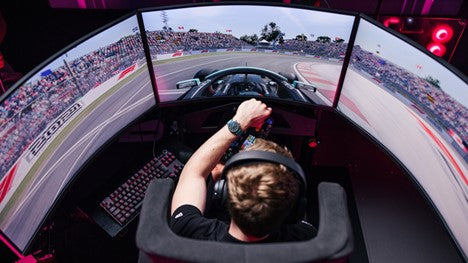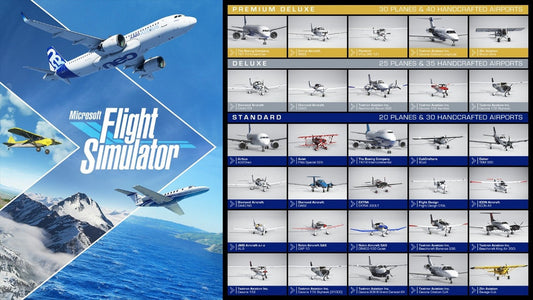How To Set Up a Sim Racing Cockpit – Complete Guide

Buying a robust, high-quality cockpit is one of the wisest decisions you can ever make for your racing simulator. However, knowing how to set up a sim racing cockpit properly is important first. Breaking a joint while assembling or damaging it somehow is the last thing you’d want to do.
Whether on PC or console, here’s your complete guide to setting up a racing cockpit. Make sure to read this till the end to properly get started setting up your sim racing cockpit!
What is a Sim Racing Cockpit?

Before you get into how to set up a sim racing cockpit, you need to have one first. If you haven’t bought any yet, then go through this section. It will provide you with all the important information you need on making an informed decision on buying the right sim racing cockpit for your needs.
The cockpit is the heart of your sim racing setup. It's the frame where everything from the steering wheel and pedals to the shifters and seat comes together. Therefore, choosing the right one can make a big difference in both comfort and performance. So, what should you look for when browsing options?
Stability is the first and most important factor. Your cockpit should not shake or move during intense races. If it moves every time you brake or turn, it will ruin the experience and possibly damage your gear.
Durability is next. Why? Because racing can get intense, especially with force feedback wheels. You want something that lasts long, can handle pressure, and doesn’t wear out quickly, especially if you race often.
Then there’s customisation. Since every racer has different needs, a good cockpit should let you adjust the seat, pedal angle, and wheel height. This will help you find your perfect driving position and race for longer sessions without getting strained out.
What You Need to Know Before Building a Sim Racing Cockpit

In addition to a gaming PC/console, core components to having an immersive racing simulation experience are a monitor, a steering wheel, and a chair (or cockpit as you would rather call it). However, there’s a crucial difference between a regular chair and a cockpit. In that, a cockpit is modular and especially designed to be flexible to adjust to a person’s physical preferences while sitting in one.
Cockpit Assembly
After you’ve bought your sim racing cockpit, it’s time to learn how to put it together the right way. Most cockpits come with a manual, so follow each step carefully.
If possible, build it on a flat surface to make sure everything fits and aligns well. Use the proper tools, and tighten all bolts firmly, but don’t over-tighten, as that could damage the frame.
Also, make sure the cockpit is level. A wobbly setup not only feels bad but can also cause your seat, wheel, or pedals to shift during a race.
A loose frame will not only affect your driving but might also damage your gear. So take your time with the assembly. Therefore, it’s best to assemble everything loosely at first, then make final adjustments once you test the sitting position.
Cockpit Setup Layout
A key part of how to build a sim racing cockpit is making sure it fits your body comfortably. Comfort and body posture in sim racing matter more than what most people think. A good cockpit should allow your body to stay relaxed, even during long races.
In other words, you shouldn’t feel cramped or stretched while racing. Your seat should allow your legs to bend naturally, with your feet resting fully on the pedals. The steering wheel should be close enough that you can grip it with your arms slightly bent, not fully stretched.
Monitor Screen Placement

Whether you use a single screen, triple monitors, or a VR headset, screen positioning is crucial. A monitor that’s too far or too high can ruin your racing experience. The screen should be at eye level, about an arm’s length away. This will give you a clear and realistic field of view (FOV).
If you’re using VR, make sure you have enough space around you (free of cables and furniture) to move safely, and that the headset is adjusted to give a clear, strain-free view.
Gear Shifters Position
Not every racer uses a gear shifter, but if you do, place it somewhere close to your steering wheel—ideally on the same level or slightly lower. This allows for fast, natural hand movements.
Sequential shifters are popular for rally and touring cars, while H-pattern shifters (with 6–7 gears) are often used for classic or street racing simulations. Just be sure the mount is firm on your cockpit. A wobbly, loose shifter can ruin the immersion fast during quick gear changes.
Sound System
Don’t underestimate sound. While it’s optional, a good sound system can really boost immersion. A quality 2.1 or 5.1 speaker setup placed in a good position around your cockpit can help you hear engine noise, tire screeches, and collisions more clearly. If you can’t use speakers, a good pair of racing headphones will still give you excellent audio without disturbing others.
Optional Sim Racing Cockpit accessories
To finish building your sim racing cockpit setup in style, consider some helpful add-ons such as:
- A button box that gives you quick access to controls like headlights, wipers, or pit stops.
- A handbrake, which is really a handy tool for rally games or drifting.
- Mounting trays for your keyboard and mouse as they can make navigating menus easier.
- Although cup holders, phone mounts, or even a fan for airflow are small touches, but they can make long racing sessions more comfortable and enjoyable.
How To Set Up a Sim Racing Cockpit

By now you know all too well that setting up your sim racing cockpit is more than just tightening screws. Everyone’s body and racing style are different, so there’s no “one-size-fits-all” setup. But don’t worry, I’ll guide you through each step to help you build a sim racing cockpit that’s comfortable, functional, and race-ready.
Start by choosing a good spot. You’ll want a clean, flat surface with enough room to move around during setup. Make sure it’s well-lit and quiet, especially if you plan to spend long hours racing. It’s also smart to pick a space near power outlets and internet access if you’re using online features.
When it comes to the cockpit frame, follow the manual instructions carefully. If parts are adjustable, like the seat rail, pedal plate, or wheel deck, don’t fully tighten them yet. Leave a bit of room for adjustments after everything is in place.
Once the frame is ready, mount your racing seat. Adjust the seat so you can reach the pedals easily without stretching your legs too much. Your knees should be slightly bent, just like in a real car.
Now, check your wheel position. You should be able to grip it with your arms slightly bent, and without leaning forward. This is the start of good cockpit ergonomics, and it will help reduce fatigue during long sessions.
Next, mount your pedals at the bottom end of the frame. Make sure they’re aligned with your legs and don't slide around. Secure them tightly to avoid slipping during braking.
Then, attach the steering wheel. The wheel should be directly in front of your seat and centred. Test the height and distance before fully tightening it.
If you're using a gear shifter, mount it next. Most racers place it on the same side as their dominant hand, which is usually the right. The shifter should be close enough to reach without taking your eyes off the track or leaning forward.
Now, focus on your display setup. Place your monitor at eye level and about one arm’s length away. This gives the best view without neck strain. If you're using triple monitors, angle the sides slightly inward to wrap the screen around your vision. If you prefer VR, make sure your headset is within reach and fully charged.
With that done, it’s time for some finishing touches. You can now install optional accessories like handbrakes, button boxes, and keyboard trays so that you can reach them quickly and naturally. For sound, use either a surround sound system or quality headphones.

Once everything’s installed, sit in your cockpit and test your setup. Adjust the seat, wheel, and pedals until it feels just right.
And there you go—you’ve successfully set up your sim racing cockpit. Now, all that’s left is to fire up your favourite racing game and hit the virtual track!





